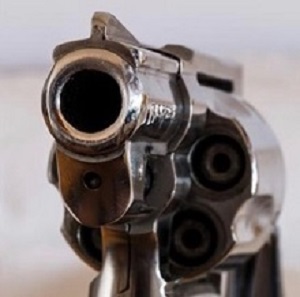 In 2012‚ Groote Schuur Hospital spent a total of R2.7m, excluding salaries, on the 111 patients it treated for orthopaedic gunshot wounds, found a Univeristy of Cape Town and University of Texas study. Almost 55,000 gun-related injuries were treated that year nationally.
In 2012‚ Groote Schuur Hospital spent a total of R2.7m, excluding salaries, on the 111 patients it treated for orthopaedic gunshot wounds, found a Univeristy of Cape Town and University of Texas study. Almost 55,000 gun-related injuries were treated that year nationally.
The price of a single bullet is as little as R6‚ but treating a gunshot wound in a South African public hospital comes with a hefty price tag for the government‚ which forks out about R25,000 for each patient. According to a report in The Times, the impact of these injuries on the state coffers is revealed in a study, which found that “while the mortality rate attributable to firearms in South Africa is high‚ the burden of non-fatal firearm-related injuries is far worse.
The study refers to a survey taken of 111 patients between the ages of 13 and 74 who were treated for non-fatal gunshot wounds at the Groote Schuur Hospital in Cape Town in 2012. Among those admitted‚ 135 surgeries were performed.
“Of these procedures‚ 112 were orthopaedic‚ 13 were orthopaedic with concurrent general or vascular surgery procedures‚ and 10 were other non-orthopaedic trauma procedures. These 135 operations required a cumulative surgical time of 220 hours 3 minutes and cumulative anaesthesia time of 306 hours 25 minutes‚” lead author Case Martin, at the department of orthopaedics, School of Medicine, University of Texas Health San Antonio, said. “For the 112 exclusively orthopaedic procedures‚ the average anaesthesia time was 117 minutes‚ while surgical time averaged 79 minutes.”
“Theatre costs‚ excluding implants‚ were in excess of $94 490 (over R1.2m). Eighty of the patients received a total of 99 implants during surgery‚ which raised theatre costs an additional $53 381 (over R700,000) cumulatively‚ or $667 (R8,840) per patient‚” the authors said. Further funds were pumped into full-body X-rays‚ CT scans‚ medication and blood transfusions.
On top of all of this‚ a gunshot victim usually required a 10-day hospital stay‚ averaging around R2,000 a day.
In 2012‚ Groote Schuur Hospital spent a total of R2.7m solely on the 111 patients it treated for orthopaedic gunshot wounds. Almost 55,000 gun-related injuries were treated that year nationally‚ meaning billions were shot into medical care. This all excluded the salaries paid to staff who dealt with the patients.
“The study did not include labour costs‚ as it was not possible to monitor and equitably monetarise the time staff spent tending to each patient‚” the researchers from University of Texas Health San Antonio and the department of orthopaedic surgery, Groote Schuur Hospital and faculty of health sciences, University of Cape Town, said.
Abstract
Background: Injuries inflicted by gunshot wounds (GSWs) are an immense burden on the South African (SA) healthcare system. In 2005, Allard and Burch estimated SA state hospitals treated approximately 127 000 firearm victims annually and concluded that the cost of treating an abdominal GSW was approximately USD1 467 per patient. While the annual number of GSW injuries has decreased over the past decade, an estimated 54 870 firearm-related injuries occurred in SA in 2012. No study has estimated the burden of these GSWs from an orthopaedic perspective.
Objective: To estimate the burden and average cost of treating GSW victims requiring orthopaedic interventions in an SA tertiary level hospital.
Methods: This retrospective study surveyed more than 1 500 orthopaedic admissions over a 12-month period (2012) at Groote Schuur Hospital, Cape Town, SA. Chart review subsequently yielded data that allowed analysis of cost, theatre time, number and type of implants, duration of admission, diagnostic imaging studies performed, blood products used, laboratory studies ordered and medications administered.
Results: A total of 111 patients with an average age of 28 years (range 13 – 74) were identified. Each patient was hit by an average of 1.69 bullets (range 1 – 7). These patients sustained a total of 147 fractures, the majority in the lower extremities. Ninety-five patients received surgical treatment for a total of 135 procedures, with a cumulative surgical theatre time of >306 hours. Theatre costs, excluding implants, were in excess of USD94 490. Eighty of the patients received a total of 99 implants during surgery, which raised theatre costs an additional USD53 381 cumulatively, or USD667 per patient. Patients remained hospitalised for an average of 9.75 days, and total ward costs exceeded USD130 400. Individual patient costs averaged about USD2 940 (ZAR24 945) per patient.
Conclusion: This study assessed the burden of orthopaedic firearm injuries in SA. It was estimated that on average, treating an orthopaedic GSW patient cost USD2 940, used just over 3 hours of theatre time per operation, and necessitated a hospital bed for an average period of 9.75 days. Improved understanding of the high incidence of orthopaedic GSWs treated in an SA tertiary care trauma centre and the costs incurred will help the state healthcare system better prioritise orthopaedic trauma funding and training opportunities, while also supporting cost-saving measures, including redirection of financial resources to primary prevention initiatives.
Authors
Case Martin, Gerhard Thiart, Graham McCollum, Stephen Roche, Sithombo Maqungo
[link url="https://www.timeslive.co.za/news/south-africa/2017-07-05-gunshot-wounds-cost-public-hospitals-billions-each-year/"]The Times report[/link]
[link url="http://www.samj.org.za/index.php/samj/article/view/11941"]SA Medical Journal abstract[/link]
